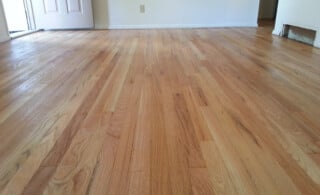There’s no denying that “pet people” would do just about anything for their furry, four-legged friends. That includes ignoring pet-induced allergies and sniffling, sneezing, and scratching their way through their days.
Pet allergies are caused by dander, a protein found in your pet’s skin, saliva, and urine. All pets with fur or feathers have it, including cats, dogs, birds, horses, and rodents. They spread it through your home when they scratch, shake, eat, and play. So, no matter the pet, if you have allergies, you have to get dander under control.
Luckily, there are plenty of ways for pet parents to breathe easier — literally. One of the most effective methods for minimizing the discomfort of allergies and maximizing the enjoyment you get from your fur babies is simply to keep your home clean. Here’s how you do that:
1. Vacuum the Room
Whether you have hard floors or plush carpet, your floors are one of the dirtiest surfaces in your whole home. If you suffer from allergies of any kind, the dirt and debris on the floor can aggravate your symptoms. And when you have a pet, that dirt and debris are full of — you guessed it — dander. That’s why you have to suck it up!
- Carpet attracts dander like magnets. To remove the dander, vacuum at least weekly. Choose a vacuum with a HEPA filter, since they can handle smaller particles. Unfortunately, the act of vacuuming may stir up dander on the surface, so you should wear a mask while you work. As contaminants settle into the depths of your carpet, they can be too difficult for a typical vacuum to remove. Once a year, call a professional carpet cleaning service to shampoo or steam the fibers and remove the particles you miss.
- Rugs are another place where dander settles. If you can, launder small rugs and mats at least weekly. For larger rugs, vacuum them once a week with your HEPA-enabled vacuum, and have them professionally cleaned once per year.
- Hard floors, including tile, wood, laminate, linoleum, and concrete, are not immune to dander. While smooth surfaces are less likely to trap the protein, even minute cracks and scratches can provide a place for dander to hide. Vacuum or sweep the room regularly, and mop, steam, or clean the floor based on the manufacturer’s instructions. This will remove dander that may be stuck to the surface. If your floor is more than 10 years old, it may be time to hire a flooring pro to refinish hardwood, re-grout tile, or replace linoleum.
- Upholstery and fabric can also attract and hold dander. To minimize the direct transfer of dander from your pet, keep them off the furniture, or cover the surfaces with a washable towel or blanket. To minimize airborne dander, vacuum furniture and drapes once weekly.
In addition to these tips, you should also remove your shoes at the door. In addition to tracking in pet dander and other contaminants from outdoors, your shoes can track pet dander into areas of your home where your pet isn’t even allowed to go.
2. Take Care of the Air
If pet owners could see the dander floating in the air of their homes, they might feel differently about sharing their space with their four-legged friend. Fortunately for Fido, dander is microscopic. Unfortunately for allergy sufferers, the tiny particles are in every breath they take. Once inhaled, they aggravate sensitive membranes in the nose and lungs. By taking care of the air in your home, you can reduce the amount of dander you breathe in and its negative effects on your immune system.
- An air purifier reduces allergens in the air by pulling the air in your home through a series of filters that remove harmful particles. To be sure you are eliminating the super-small dander particles, look for a unit with a True HEPA filter that can trap materials as small as 0.3 microns in size. Depending on the square footage of your home, you may need more than one unit. As a bonus, air purifiers can also help eliminate pet smells.
- Air ducts can also harbor dander and allow it to circulate through your ventilation system. Using a HEPA filter and changing it regularly can help, but you may need to call an HVAC professional to inspect your system for broken seals. Otherwise, pet dander can build up in your ducts and blow through your vents into your living area. If this is a concern, you can also install filters or cheesecloth in your floor vents to help trap the particles.
- Dust well and often to eliminate particles that have landed on walls, bookshelves, nightstands, tables, and other surfaces. Use a damp cloth or a static duster to ensure you don’t stir up the dust as you clean.
In addition to taking care of the air in your home, you should also consider making some spaces completely off-limits to your pets. Sleeping spaces, for example, should be pet-free. Keeping dander off of the soft materials in the room where you spend most of your time will help keep your allergies at bay.
3. Don’t Forget Your Pet
When it comes to keeping dander under control, it doesn’t hurt to go straight to the source. Cleaning and treating your pets, along with their bedding and toys, can make a huge difference in the amount of contact you have with the allergens they produce.
- Bathe animals with fur or hair weekly with a shampoo that won’t dry out their skin. Between baths, be sure to brush your pet frequently (and outdoors) to remove loose hair and skin. You may need to wear a mask. Finally, ask your vet to recommend a product you can apply directly to your pet to reduce dander.
- Wash the items your pet uses at least weekly. This includes bedding, toys, and clothing. You should also rinse off bones, clean food and water bowls, and wipe down crates to remove saliva and dander.
- Talk to your vet if your pet is licking or scratching excessively, as these activities stir up dander and release it into the air. Your pet may have dermatitis or another condition, and treating it may help both of you.
Aside from ensuring your pet is clean and healthy, you can reduce the contact you have with pet dander without swearing off playing with or petting your pet altogether. Take steps like washing your hands, changing your clothes, and having someone else clean up pet messes to minimize the inflammation.
4. Make a Clean Routine
If you want all of this hard work to pay off, consistency is key. Unfortunately, keeping dander under control will be a constant battle. Of course, if it means getting to spend more time with your fur baby or not having to find him a new home, it will be well worth the extra work.
- Hiring a professional cleaning service to perform an initial deep clean and then return once a month will cost you a little bit of cash, but it could make a huge impact on your quality of life.
- Make a list of every cleaning activity you need to complete, and assign each one a day of the week. Breaking it up will take less time and make it easier to stick to your plan. If you miss a day, simply complete the task from the previous and the current day.
- On days you don’t have time to clean, use an allergen spray to deactivate the dander and reduce your immune response. Check with your vet to be sure the formula you choose is pet-friendly.
No matter how much a pet parent loves his or her furry or feathery friend, no one should have to live with the constant struggle and suffering of allergies. The good news is that many people who are allergic to dander can find ways to reduce their symptoms and live a happy, healthy life with the pet they love.

 Air Duct Cleaning
Air Duct Cleaning  Cleaning Your Exteriors With a Pressure Washer
Cleaning Your Exteriors With a Pressure Washer  Range Hood Cleaning Tips
Range Hood Cleaning Tips  Cleaning Wool Berber Carpet
Cleaning Wool Berber Carpet  Cleaning Hardwood Floors
Cleaning Hardwood Floors 

Are You Familiar With This Topic? Share Your Experience.